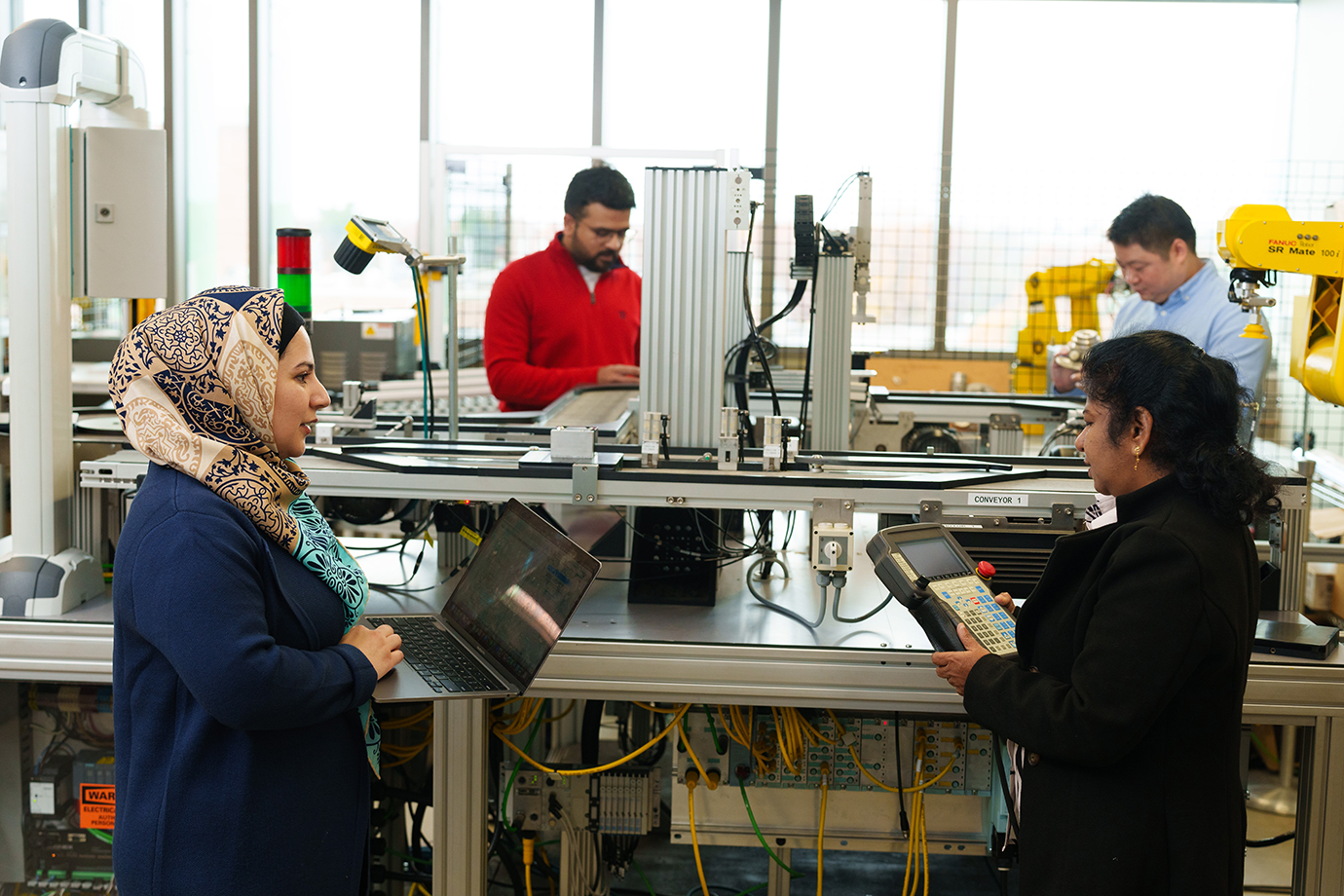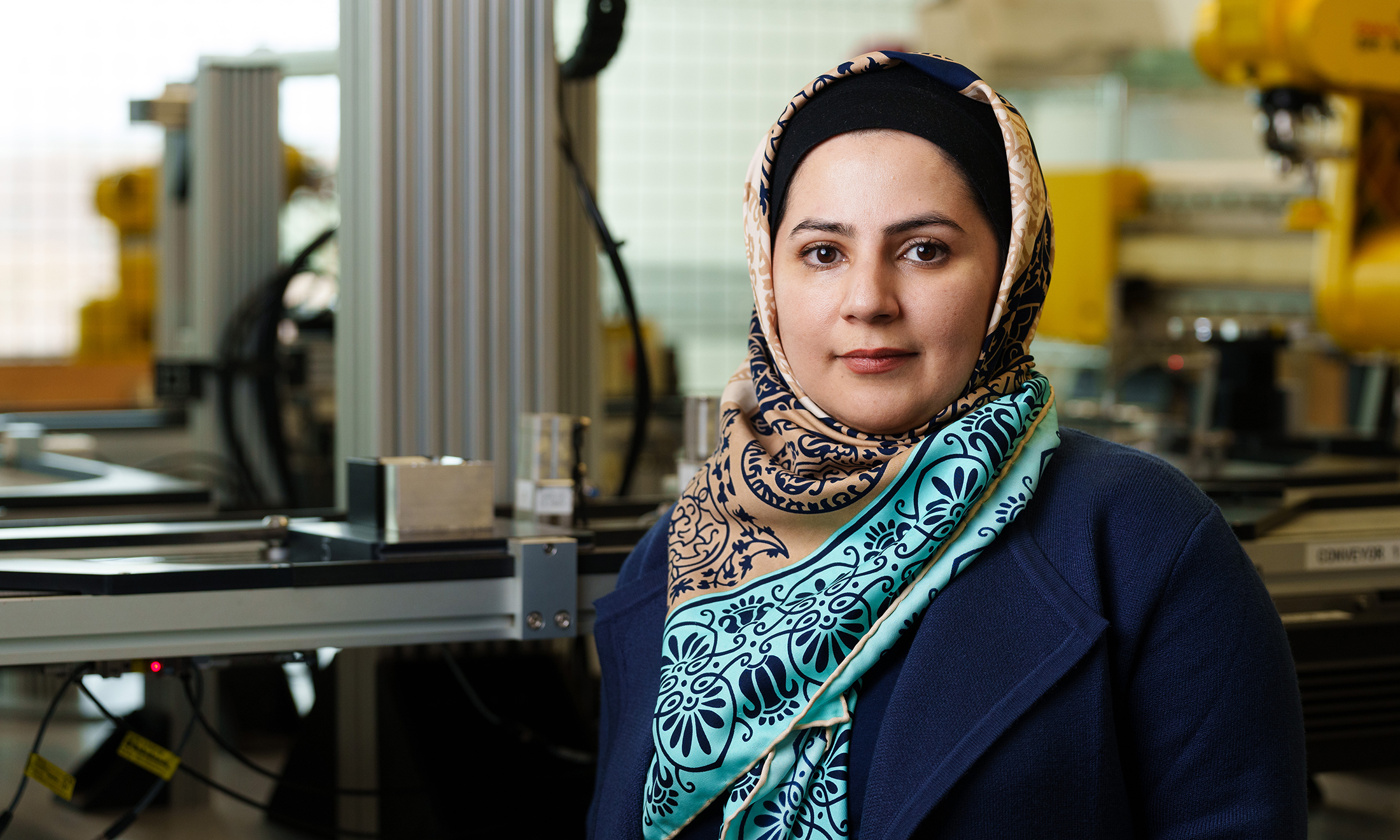Smart Solutions
Dr. Nasim Nezamoddini’s research combines AI and optimization to enhance control of complex, networked systems for smart cities and beyond.
“Imagine a smart city — a newly developed urban area equipped with cutting-edge technologies for optimized management and sustainability. The entire city operates on an advanced metering infrastructure, each equipped with sensing capabilities and embedded intelligence. Streetlights adjust brightness, based on traffic, smart homes manage energy use in real time and waste bins notify collection services when full. Public transportation adapts routes, using real-time data, while the city’s wireless sensor network monitors infrastructure for early maintenance needs. All devices are interconnected via the Internet of Things (IoT) platform, enabling seamless data exchange and autonomous responses to changing conditions,” says Nasim Nezamoddini, Ph.D., assistant professor in the Department of Industrial and System Engineering, who investigates solutions for improving the optimization and real-time control of large-scale, complex networked systems.
Composed of separate parts that work together by sharing information and coordinating their actions to achieve common goals, a networked system optimizes resource utilization, enhances communication efficiency and adapts to changing conditions. Recently, IoT and smart technologies have enabled systems to reach greater automation by adding sensors, smart meters, actuators and controllers. These parts, however, interact in very complex ways, making it harder to control and manage them. This puts a heavy strain on the system and compromises its effectiveness.
Based at the Complex Systems Laboratory (CSL), an interdisciplinary research facility within OU’s Engineering Center, Dr. Nezamoddini and her graduate student research team encompasses both fundamental and applied research in modeling and controlling large-scale, complex networked systems.
 |
|---|
| Dr. Nezamoddini and her Ph.D. students developed an adaptive control platform for the network of reconfigurable manufacturing systems. |
“Current control methods for networked systems either rely on a single, less-effective centralized decision-maker or use distributed ‘multi-agent’ methods, where each component makes decisions locally and can act as an ‘agent,’ sensing its surroundings and responding to internal and external changes. These existing methods are often slow or insecure and struggle in changing environments. Additionally, agents are often treated in these systems as uniform, without considering their individual roles, risks and constraints,” Dr. Nezamoddini says, while explaining the need for a more dynamic solution.
A new approach proposed by Dr. Nezamoddini combines the strengths of both methods: it allows for knowledge sharing like centralized systems and for flexibility like distributed ones, while also minimizing their downsides. Instead of using complex existing techniques, Dr. Nezamoddini and her team focused on developing new, adaptive, data-driven techniques to optimize connected agents’ operations in real time and create robust and resilient controls when facing risks of internal or external unexpected events.
Combining deep reinforcement learning with graph-based data mining and optimization methods to better handle data and coordinate responses, allowed to develop a framework that advances the knowledge of how to control distributed systems — where individual parts can sense, communicate and act independently. This framework can be useful in the areas that require many autonomous agents to work together in unpredictable environments with limited resources (e,g. smart grids) or time-sensitive applications (e.g. military operations and surgeries).
“Our research is optimization of any system that can be modeled as a network. We have a systematic view that models and optimizes [the] orchestration of these subsystems by collecting real-time data and scheduling their tasks and responses in case of failures, delays or disruptions. We introduce methods based on traditional, robust and stochastic network optimization, enhanced by recent advances in graph neural networks and multi-agent reinforcement learning,” Dr. Nezamoddini shares.
The CSL team’s interest in adaptive network systems spans across a broad range of areas, such as smart cities, collaborative supply chains, smart grids and smart manufacturing.
For instance, Lata Karmali, a M.S. student interested in electric vehicles, helped develop a novel model that simultaneously optimizes production planning and transportation scheduling for electric trucks within a smart manufacturing framework. The model addresses uncertainties in renewable energy generation, transportation patterns and customer demand fluctuations.
“In smart manufacturing, we are dealing with a large network of connected assets that are exposed to various sources of uncertainties and potential failures. Electric trucks can serve as dynamic energy resources through grid-to-vehicle and vehicle-to-grid technologies, facilitating the effective management of a smart manufacturing network. The results of our work show that, by strategically scheduling charging and discharging activities, the use of these trucks can lead to developing an adaptive control platform with considerable cost savings and improved utilization of renewable energy resources, such as wind and solar power,” says Karmali, who was the first author of the article entitled “Integrated Optimization of Production Planning and Electric Trucks Charging and Discharging Scheduling,” which was recently published in Sustainable Energy, Grids and Networks (SEGAN).
In another research project, Dr. Nezamoddini and her Ph.D. students developed an adaptive control platform for the network of reconfigurable manufacturing systems, enabling each station to adjust its configuration in real time to handle fluctuations in product demand, as well as delays and failures in other stations.
For more information about Dr. Nezamoddini’s research and its applications, please visit the CSL website.

 December 11, 2024
December 11, 2024
 By Arina Bokas
By Arina Bokas









